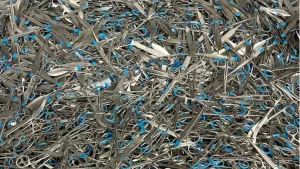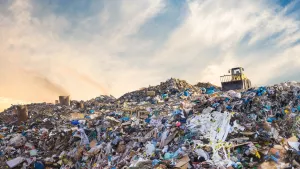Tackling Waste in Sterile Processing: Promoting Sustainability and Efficiency
Incision · · 3 min readSterile processing plays a vital role in healthcare facilities, ensuring that medical equipment and instruments are free from harmful microorganisms. While maintaining patient safety is paramount, it is also important to address the issue of waste generated within the sterile processing department. By implementing sustainable practices and optimizing resource utilization, healthcare facilities can minimize waste, reduce costs, and contribute to a healthier environment. This article delves into the challenges of waste in sterile processing and explores strategies to promote sustainability and efficiency.
1. Understanding the Scope of Waste in Sterile Processing:
a. Packaging Waste: The sterile packaging materials used to maintain sterility during storage and transportation contribute to significant waste generation.
b. Water and Energy Usage: The water and energy-intensive processes involved in sterilization, such as steam sterilization, can lead to substantial resource consumption and associated waste.
c. Single-Use Items: The prevalence of single-use instruments and disposable supplies adds to the volume of waste generated, impacting both the environment and healthcare costs.
d. Chemical Waste: The use of disinfectants, detergents, and sterilant can result in chemical waste that requires proper handling and disposal.
2. Sustainable Strategies in Sterile Processing:
a. Packaging Optimization: Exploring alternative packaging materials, implementing reusable packaging systems, and right-sizing packaging to reduce waste volume.
b. Sterilization Method Selection: Assessing the environmental impact of different sterilization methods and considering low-temperature alternatives that consume fewer resources.
c. Instrument Reprocessing and Reuse: Implementing effective transport, decontamination and sterilization processes to maximize the lifespan of instruments and reduce reliance on single-use items.
d. Water and Energy Conservation: Incorporating water and energy-saving measures such as efficient equipment design, recycling steam, and using energy-efficient technologies.
e. Chemical Management: Adopting environmentally friendly and biodegradable cleaning agents, optimizing chemical usage, and ensuring proper disposal of hazardous substances.
3. Collaboration and Education:
a. Interdepartmental Collaboration: Encouraging cooperation between sterile processing, supply chain management, and healthcare providers to promote waste reduction initiatives and implement best practices.
b. Training and Awareness: Providing education and training programs to sterile processing staff on waste management, sustainability practices, and the importance of their role in minimizing waste generation.
4. Technology and Innovation:
a. Automation and Robotics: Integrating automated systems for instrument decontamination, sorting, and inventory management to improve efficiency, reduce errors, and optimize resource utilization.
b. Data Analytics and Process Optimization: Leveraging data-driven insights to identify areas of waste generation, optimize workflows, and implement evidence-based improvements.
5. Regulatory Compliance and Standards:
a. Adhering to Regulatory Guidelines: Staying up-to-date with regulations and guidelines related to waste management, disposal of hazardous materials, and environmental sustainability in healthcare settings.
b. Certification Programs: Seeking certifications such as ISO 14001 (Environmental Management System) and implementing quality management systems to ensure compliance and continual improvement. Efficient waste management and sustainability practices in sterile processing are essential for healthcare facilities to reduce environmental impact, optimize resource usage, and improve cost-effectiveness. By implementing packaging optimization, promoting instrument reprocessing, conserving water and energy, managing chemicals responsibly, fostering collaboration, and embracing technological advancements, healthcare organizations can make significant strides toward waste reduction and create a greener future for sterile processing. Through these efforts, we can achieve a harmonious balance between patient safety, operational efficiency, and environmental stewardship.
Ready to revolutionize your sterile processing practices? Join our Sterile Processing Program, launching in the first week of October! Discover cutting-edge strategies, gain hands-on skills, and become a leader in sustainability and efficiency. Don't miss out on this opportunity to shape the future of healthcare. Sign up now to be notified when registration opens!







